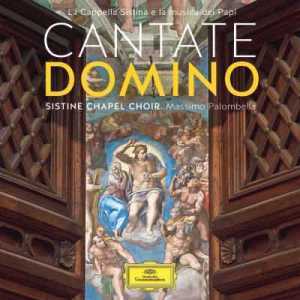As he or she steps through the narrow, unimposing door into the Sistine Chapel, the first word the inevitably awestruck visitor is likely to hear is “Silenzio!”, a sharply shouted exclamation from a Vatican guard that echoes for several seconds through the vast, sacred space. Silence in churches is expected from visitors everywhere in Italy, but here it’s especially important. The reason: in a room of this size and shape–134 feet long, 44 feet wide, and 68 feet high (the same dimensions, as described in the Old Testament, as the Temple of Solomon)–packed nearly wall to wall with tourists (25,000 people per day visit the chapel), the sound of hundreds of voices, even quietly whispered ones, easily becomes a clamor, a murmur that within seconds bubbles and rises to a din. The chapel’s architectural measurements, plus the highly reflective properties of the walls, ceiling, and floor, make for an ideal chamber for sound to resonate. “Silenzio!” comes the shout, and the room quiets for a few seconds before the next roiling wave of conglomerated, excited commentary from hundreds of mouths rises again to bounce off Michelangelo’s vaunted, vaulted masterpieces.
This recording purports to be the “first studio album ever to be recorded in the Sistine Chapel”, and that will be a major selling point for many listeners. The repertoire also is attractive: works by Lassus, Victoria, and Palestrina–all of whom were connected in some way either to the Sistine Chapel choir or who significantly contributed to the music of the Roman church–along with a few selections of Gregorian chant. And Allegri’s most famous work, his Miserere, is here, albeit in a version claimed to be a world premiere of the “original” (preserved in the Sistine Codex of 1661), which doesn’t have the later highly ornamented interpolations. The singing throughout, from this impressive choir of approximately 60 men and boys, is excellent, and if you want a highlight, it is their performance of Palestrina’s marvelous motet Sicut cervus.
By now you may have guessed the reason for the trouble I took to describe the chapel’s acoustic characteristics: to be kind, it’s not an ideal place to make a recording. For the same reasons that cause random speaking voices to effortlessly rise into incredible cacophony, so does the chapel’s exceptionally live acoustic compromise blend, balance, and detail of polyphonic lines even with refined, meticulously focused ensemble singers such as these. If you want a realistic experience hearing a very fine choir singing in the Sistine Chapel, performing works that would have been sung there centuries ago, this recording will serve you well. But you’ll find better recorded versions of many of the individual selections elsewhere (except for the Allegri, which is unique to this disc).
Of course there is no substitute for an actual in-person experience of the Sistine Chapel, not for its music, but for its incomparable visual art enhanced by an otherworldly ambience: The imposing figures, the vivid, some would say garish, colors, the unique, all-surrounding presence of the scenes and images are so alive and vibrant and fresh-looking that you get an uncanny feeling, surely unparalleled in any other art-filled space, that the illustrious creators could have left the room only moments before. If only a musical performance recorded in such a place could carry at least some of those affective attributes to a listener; instead, we’re bound by our imaginations, to think perhaps of a young Palestrina or Allegri singing in the chapel choir; or of the reported experience of the boy Mozart who heard Allegri’s celebrated Miserere setting sung there and secretly transcribed it from memory (an act forbidden by the church); or to picture the pompous, powerful 16th century Pope Julius II presiding over some occasion, celebratory or solemn–and knowing with reasonable assurance that the sounds they heard in that space–even a sternly shouted “Silenzio!”–echoed exactly the same as those we hear today.
































